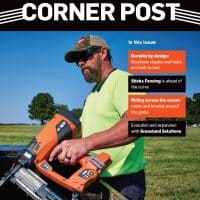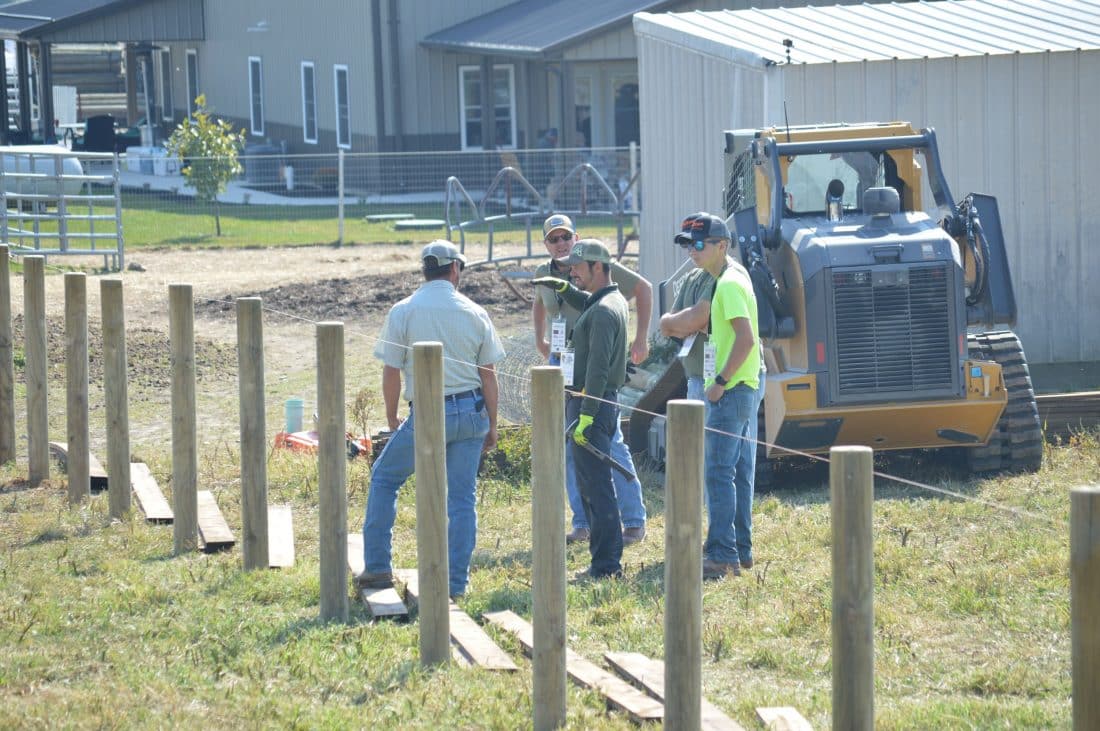Robert Littrell runs Sticks Fencing in Central Kentucky, the “Horse Capital of the World”. He says most thoroughbreds you see at the Derby and the horse races are born within a 30-mile radius
It’s no surprise then that equine fence, usually wire fencing with a board or Centaur on top or four-rail, keeps the staff of seven well occupied.
Robert says a problem is the labor shortage. “Typically, if you had ten people available, you only have five people now. With fewer staff, you are limited on what you can do. So, if you speed up a process, that is really going to help in the long run and be easier on your crew members.
Robert’s first tool
Robert bought his first Stockade tool about 10 years ago — the pneumatic ST400. Initially it didn’t get a good workout.
“My problem was my math. I thought, well, I could staple this fence a lot cheaper if I just bought a 50-pound bucket of staples. But I was too young to understand that the Stockade power stapler was saving me money by reducing the labor aspect.”
Sticks Fencing Today
Now Sticks Fencing has a pneumatic ST400 tool and two of the gas-powered ST400i cordless staplers.
“Since we have been using the Stockade staplers, none of our crew members have swung a hammer. A minute stapling by hand is now a 10 second job per post. Your guy comes back and he is not tired, he’s ready to do another job.”
Robert Littrell
Robert and his crew have just completed a three-mile project of equine fence using wire netting with a vinyl Centaur rail on top. He says the ST400i has really saved time on the job.
Rob says when building equine fence, the quality of fence and a good understanding of the livestock, particularly the safety of horses are key considerations.
“In the thoroughbred industry, racehorses, younger horses and mares are hot-headed. They like to run from one end of a paddock to another, so when it comes to equine fence, one thing that is not allowed is a square corner. All the fencing must be on the inside of the paddock and with rounded corners. That becomes an issue when stapling a post when you are in a curve”.
“You need to think how to make this work without the staples pulling. We have a good way of pulling our curves. Once we get to that point, we use the ST400i to push the wire in to make it tight…
That’s one of the most enjoyable things of the Stockade stapler, not having to use too much manpower to leverage the tool to push the wire in and staple it.”
High Quality Fencing
“From driving the posts, to pulling the wire and stapling, it all ties in together to make a high-quality fence. We are using an inch and three-quarter staple and use two staples in each post in our curves. We double up the staples to make sure the wire doesn’t pull out.”
While Kentucky is known for its gently rolling hills and green grass all year round, underground there’s a lot of rock. Out of the whole project of three miles, Robert and the crew drilled 60 four-foot holes through solid limestone.
Beyond digging and drilling holes, the crew need to be aware of underground utilities. They always call 811 before they dig.
Materials and equipment
Robert used 2400 Stockade staples, 48 rolls of Tornado 13/43/2 wire with 24 rolls 660-foot Centaur vinyl rail and 1980 6×8 inch brown line posts.
Drilling was done with a 279 Caterpillar skid loader with a rock drill on the side and post driving with a custom-built post driver on a Massey Fergusson tractor four-wheel drive with a loader.
Note: This article has been recently published in ISSUE 02 of the CORNER POST Magazine.

Would you like to see the ST400i in action?
To book your free tool demo, get in touch with us at www.stockade.com/contact-us

